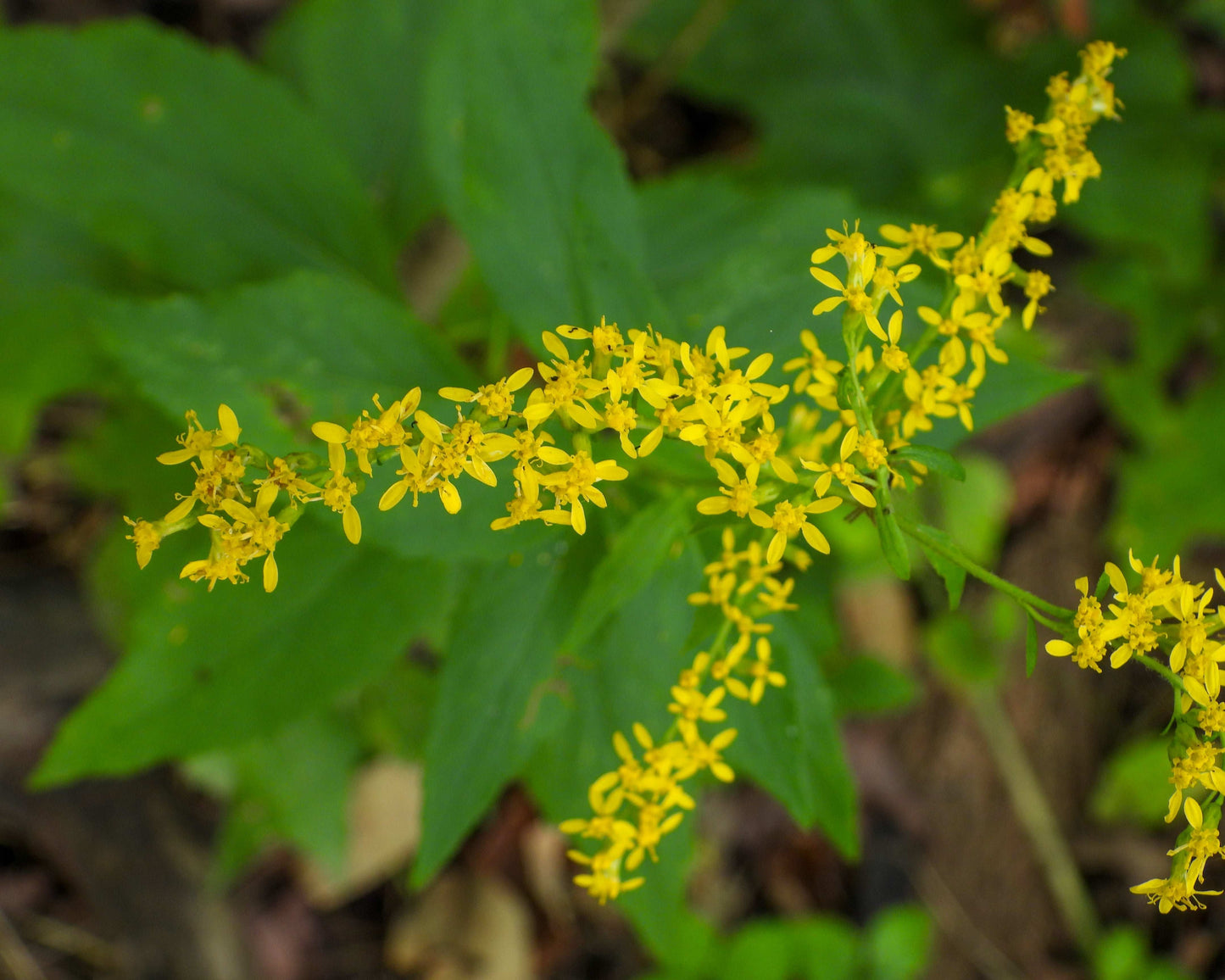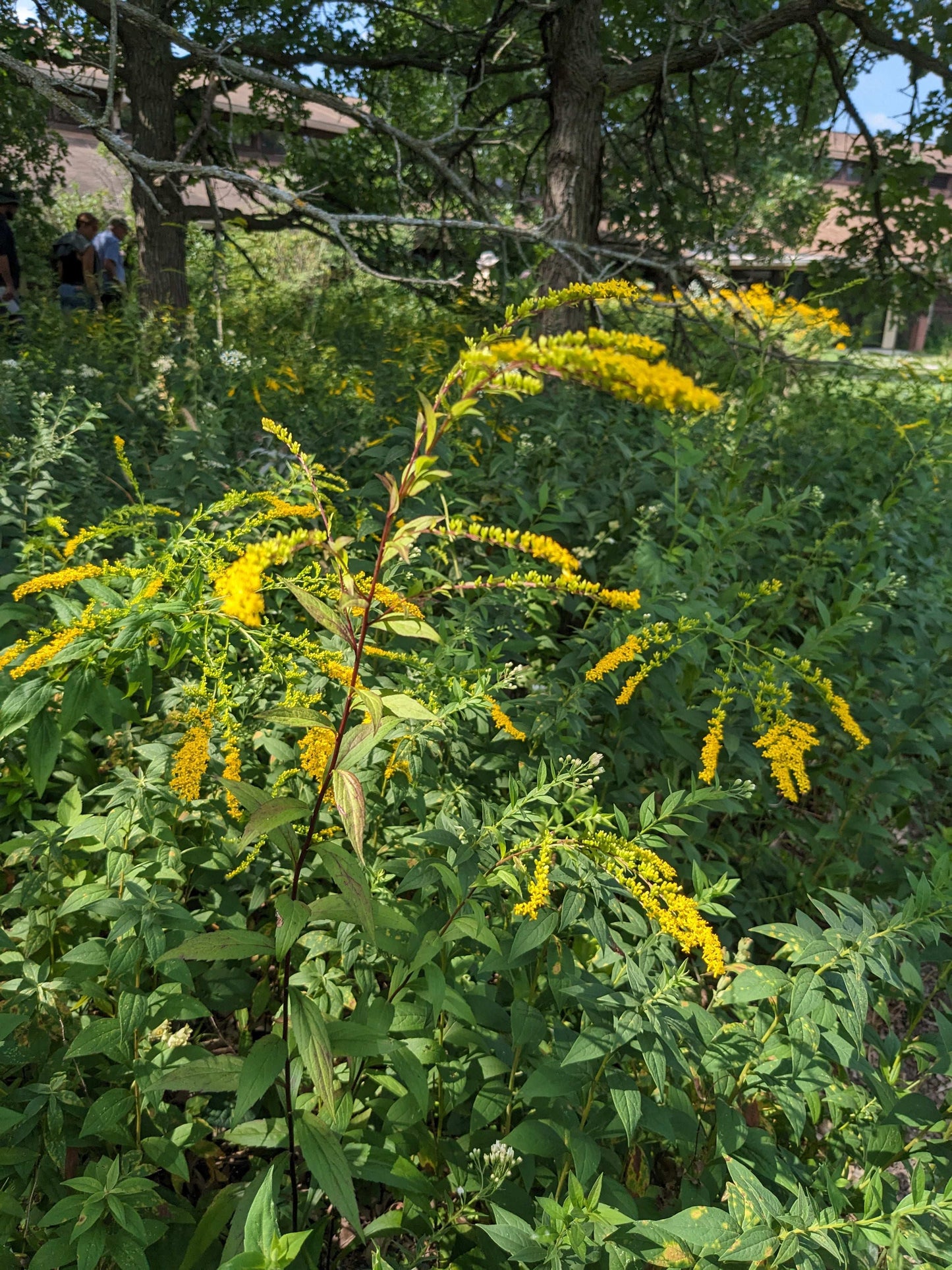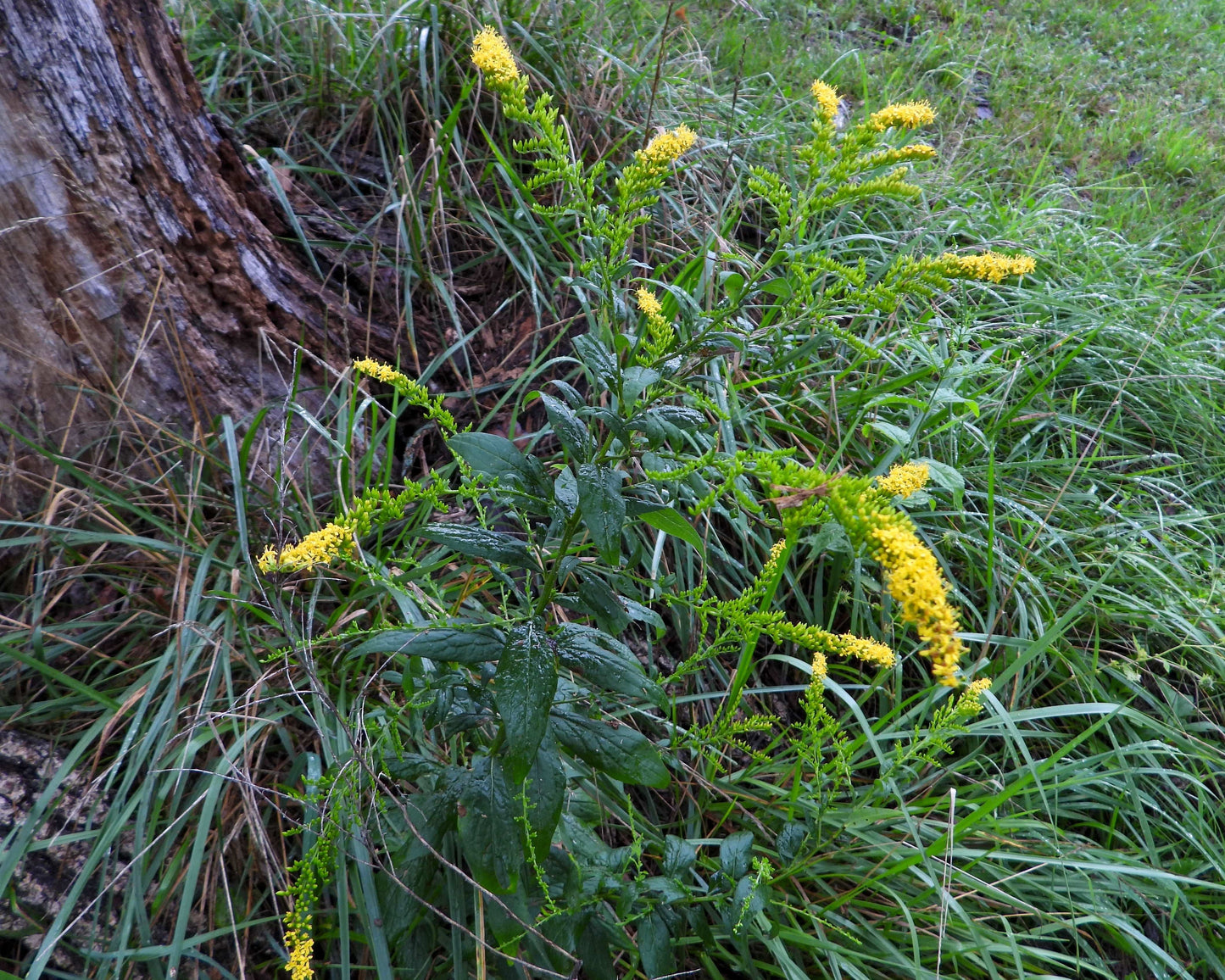Perennial
Solidago ulmifolia (elm-leaved goldenrod)
Solidago ulmifolia (elm-leaved goldenrod)
Couldn't load pickup availability
If you have a small shady garden, this woodland beauty is the goldenrod for you. Its delicate arching flowers attract bees and butterflies. Goldfinch, juncos, and tree sparrows eat the seeds in winter. Host plant for the goldenrod flower moth and many other moths.
Sunlight: Partial and Shade
Water: Medium
Height: 2 to 4 feet
Bloom time: July, August, September, and October
Does goldenrod cause hay fever?
Does goldenrod cause hay fever?
No. Most seasonal allergies (aka hayfever) are caused by wind-pollinated plants. Goldenrod is insect-pollinated. That means the pollen isn't floating around in the air making you sneeze. The culprit? Likely ragweed, a wind-pollinated plant that blooms at the same time as goldenrod but is much less showy. For more details, check out this article from the National Wildlife Federation: The Goldenrod Allergy Myth
Keystone species, Feeds bees, Feeds butterflies or moths, Birds eat seeds, and Host plant
Plants are sold as small pots (2.5" x 3.5")
Share






